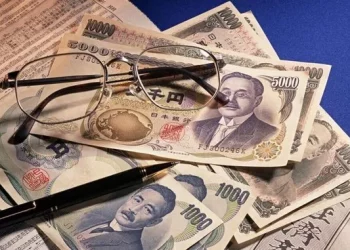In the world of foreign exchange (forex) trading, currencies are constantly being exchanged between different countries, and the value of one currency is determined relative to another. This means that the value of a dollar in one currency can fluctuate greatly when compared to another. If you have $90 USD and want to know how much that is worth in Australian Dollars (AUD), you need to understand the process of currency conversion and how exchange rates work. This article will provide a comprehensive explanation of the factors influencing the value of the US Dollar (USD) and the Australian Dollar (AUD), how to convert currencies, and why the conversion rate fluctuates.
Understanding Exchange Rates
To start, it’s important to understand what an exchange rate is. The exchange rate is the value of one currency in terms of another currency. For example, if the exchange rate between the USD and AUD is 1 USD = 1.50 AUD, this means that for every 1 US Dollar, you will receive 1.50 Australian Dollars.
Exchange rates are influenced by a variety of factors, including supply and demand in the forex market, economic performance, government policies, and geopolitical events. These factors cause the value of currencies to rise and fall over time, and as a result, exchange rates are constantly changing. The USD/AUD exchange rate, like all currency pairs, fluctuates depending on the economic conditions in both the United States and Australia.
Currency Pairs in Forex Trading
In forex trading, currencies are traded in pairs. The USD/AUD pair represents how much one US Dollar is worth in Australian Dollars. For instance, if the exchange rate is 1 USD = 1.50 AUD, and you want to convert $90 USD into AUD, the calculation would be:
90 USD×1.50 AUD/USD=135 AUD
This means that $90 USD is equivalent to 135 AUD at this exchange rate. However, it’s crucial to understand that exchange rates are constantly changing based on market conditions, so the value of 90 USD in AUD can vary from day to day.
How Exchange Rates Are Determined
Exchange rates are determined by the forex market, where buyers and sellers trade currencies. This market operates 24 hours a day, five days a week, with billions of dollars worth of currency being exchanged every day. The exchange rate for USD to AUD is determined by the supply and demand for both currencies in the market.
Several factors influence the demand for a currency. Some of the key factors that impact exchange rates include:
Interest Rates: The interest rate set by central banks, such as the Federal Reserve in the United States and the Reserve Bank of Australia, has a significant impact on exchange rates. Higher interest rates tend to attract foreign investors, increasing demand for the currency and driving up its value.
Economic Indicators: Economic indicators, such as GDP growth, unemployment rates, and inflation, can affect the demand for a currency. Strong economic performance tends to attract investment, which increases demand for the local currency.
Government and Fiscal Policies: Government policies, including trade policies, budget deficits, and taxation, can affect the value of a currency. A government running a large budget deficit may cause a depreciation of the local currency.
Political Stability: Political events, such as elections, political unrest, or international relations, can lead to uncertainty in the forex market. Currencies from countries with greater political stability tend to be more attractive to investors.
Market Sentiment: Market sentiment and investor confidence also play a major role in currency fluctuations. Positive sentiment towards a country’s economy or political environment will likely lead to an appreciation of its currency, while negative sentiment can have the opposite effect.
The Role of Forex Brokers
In the forex market, forex brokers act as intermediaries between buyers and sellers of currencies. They provide traders with access to the currency exchange market, allowing them to buy and sell currencies in real time. Brokers also offer a range of tools and services, including real-time exchange rates, to help traders make informed decisions.
Forex brokers make a profit by charging a spread, which is the difference between the buying and selling price of a currency pair. This spread varies depending on the broker and the volatility of the currency pair being traded. For example, if you want to exchange $90 USD for AUD, your forex broker will quote an exchange rate, but it may differ slightly from the interbank rate due to the spread.
Currency Conversion: What You Need to Know
When converting currencies, the process is relatively simple. To find out how much $90 USD is worth in AUD, you will need to know the current exchange rate. You can obtain this rate through a currency converter, a forex broker, or a financial website that tracks exchange rates.
Let’s say that the current exchange rate for USD to AUD is 1 USD = 1.50 AUD. In this case, the conversion would be straightforward:
90 USD×1.50=135 AUD
However, because exchange rates fluctuate, it is important to keep in mind that the conversion rate could change the next time you make the exchange. The rate might be higher or lower, and this will affect the amount of AUD you receive for your USD.
How Currency Exchange Affects International Trade
The value of the USD compared to the AUD can also affect international trade. If the USD is strong relative to the AUD, it means that US goods and services become more expensive for Australians to purchase. On the other hand, if the AUD is stronger than the USD, American products become more expensive for US consumers, potentially affecting trade balances.
For businesses involved in international trade, fluctuations in exchange rates can have a significant impact on profitability. Companies that import or export goods and services may find their costs rising or falling depending on the strength of the currency they are dealing with. As a result, many businesses use hedging strategies, such as forward contracts and options, to mitigate the risk of currency fluctuations.
Why Does the USD Change in Value?
The value of the USD can fluctuate for a variety of reasons. As the world’s primary reserve currency, the US Dollar is influenced by both domestic and global factors. The Federal Reserve’s policies, including interest rate decisions and quantitative easing, play a significant role in the value of the USD.
Additionally, global events, such as economic crises, natural disasters, and geopolitical tensions, can cause fluctuations in the value of the USD. When investors are uncertain about global economic conditions, they often flock to the USD as a safe-haven currency, which increases its value. Conversely, when the economy is performing well and global risk sentiment is higher, demand for riskier assets may cause the USD to depreciate.
The Impact of the Australian Economy on the AUD
Similarly, the value of the Australian Dollar is influenced by the country’s economic conditions. Australia’s economy is heavily reliant on exports, particularly commodities such as iron ore, coal, and natural gas. As a result, the AUD is often sensitive to fluctuations in global commodity prices.
The Reserve Bank of Australia (RBA) also plays a key role in shaping the value of the AUD. By adjusting interest rates and using monetary policy tools, the RBA can influence the supply of money in the economy and impact the value of the AUD. Additionally, global demand for Australian exports, particularly from major trading partners like China, has a direct impact on the strength of the AUD.
Real-World Example of Currency Conversion
Let’s say you are a traveler who is planning a trip to Australia, and you want to exchange $90 USD for AUD. You go to a currency exchange service and find that the current rate is 1 USD = 1.50 AUD. To convert your $90 USD into AUD, you multiply:
90 USD×1.50=135 AUD
So, you will receive 135 AUD in exchange for your 90 USD. However, keep in mind that the exchange rate can vary depending on the provider, so you might get a different amount from a bank, a currency exchange kiosk, or an online platform. Some providers might offer better rates than others, and fees or commissions could affect the final amount you receive.
Currency Exchange and International Tourism
The currency conversion process plays a significant role for international tourists. Travelers from the US who visit Australia will need to exchange their US Dollars for Australian Dollars to pay for goods and services. The exchange rate at the time of conversion will determine how much spending power a traveler will have while abroad.
For example, if the USD is stronger compared to the AUD, tourists from the US may find that their money goes further in Australia, allowing them to buy more goods or services. Conversely, if the AUD is stronger than the USD, the same amount of USD will result in fewer AUD, making purchases more expensive for the traveler.
How Currency Conversion Affects Investors and Speculators
Forex traders, investors, and speculators closely monitor currency fluctuations to take advantage of changes in exchange rates. When an investor buys a currency, they are essentially betting on its future value. For example, if an investor believes that the USD will appreciate against the AUD, they may buy USD and sell AUD in anticipation of making a profit when the exchange rate moves in their favor.
Speculators who trade in the forex market seek to profit from short-term fluctuations in exchange rates. They rely on technical analysis, fundamental analysis, and market sentiment to make their trading decisions. Since forex markets operate 24/5, traders can take advantage of global events and economic reports that affect the value of currencies.
Conclusion
Understanding the value of $90 USD in AUD is not only a simple matter of knowing the exchange rate but also involves understanding the factors that influence the movement of currencies in the forex market. Exchange rates fluctuate constantly, influenced by factors such as interest rates, economic indicators, government policies, and global events. Whether you’re converting money for travel, business, or trading purposes, it’s important to keep in mind that the value of USD to AUD can change over time, and it’s essential to monitor exchange rates closely to make informed decisions.
To calculate how much $90 USD is worth in AUD, you simply need to multiply the USD amount by the current exchange rate. However, remember that exchange rates can vary between different currency exchange providers, and fees or commissions can affect the final amount you receive. By understanding the complexities of currency exchange and the factors that influence exchange rates, you can make better decisions when dealing with foreign currencies in the global market.
Related Topics:



























